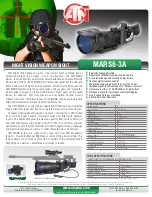
ENGLISH |
15
Star hopping to the Andromeda Galaxy (M31) is a snap, since you can locate all the stars needed with the naked eye
Star hopping will take some getting used to Objects that don’t have stars near them that are visible to the naked eye are
challenging One such object is M57 (Figure 4-2), the famed Ring Nebula Here’s how to find it:
1 Find the constellation of Lyra, a small parallelogram visible in the summer and fall months Lyra is easy to pick out
because it contains the bright star Vega
2 Start at the star Vega—Alpha (
α
) Lyrae—and move a few degrees southeast to find the parallelogram The four stars that
make up this geometric shape are all similar in brightness, making them easy to see
3 Locate the two southernmost stars that make up the parallelogram—Beta (
β
) and Gamma (
γ
) Lyra
4 Point about halfway between these two stars
5 Move about ½° toward Beta (
β
) Lyra, while remaining on a line connecting the two stars
6 Look through the telescope and the Ring Nebula should be in your field of view The Ring Nebula’s angular size is quite
small and difficult to see
7 Because the Ring Nebula is rather faint, you may need to use “averted vision” to see it “Averted vision” is a technique
of looking slightly away from the object you’re observing So, if you are observing the Ring Nebula, center it in your
field of view and then look off toward the side This causes light from the object viewed to fall on the black and white
sensitive rods of your eyes, rather than your eyes color sensitive cones (Remember that when observing faint objects,
it’s important to try to observe from a dark location, away from street and city lights The average eye takes about 20
minutes to fully adapt to the darkness So always use a red-filtered flashlight to preserve your dark-adapted night vision)
These two examples should give you an idea of how to star hop to deep-sky objects To use this method on
other objects, consult a star atlas, then star hop to the object of your choice using “naked eye” stars
Fig. 4-2
Summary of Contents for AstroMaster 102AZ
Page 2: ...2 ENGLISH ...






































